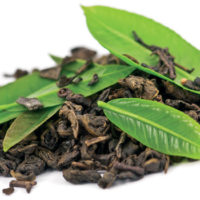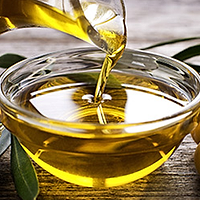A serious problem in certain parts of the world, including China, is that illegally recycled cooking oil, often called “gutter” oil, is obtained from unreliable sources near cooking establishments and then sold back to an unsuspecting user, such as a small restaurant. More broadly, gutter oil also refers to oil refined from low-quality pork and animal offal as well as overused kitchen oil that was used for fried foods. Gutter oil can cause significant foodborne illness. The recycled hazardous gutter oil that returns to kitchens has long posed a threat to consumer health; effective measures to test this waste oil are very difficult to verify. To achieve this aim, cholesterol has been used as a reliable indicator of gutter oil. Although instrumental analyses for the determination of cholesterol is neither rapid nor sensitive, cholesterol and non-qualified vegetable oil have been used as indicators for identification of gutter oil.
Caenorhabditis elegans is a free-living soil nematode about 1 mm in length and has since been used extensively as a model organism in biology. C. elegans has four juvenile stages (L1–L4) after hatching, and well-studied developmental processes make it a major model system. At end of either L1 or L2, C. elegans arrests its development and enters an alternative third larval stage, known as the dauer stage, if environmental conditions are unfavorable for growth, such as food depletion or overcrowding. Dauer larvae are stress-resistant and can withstand adverse conditions; they are easily distinguished from other developmental stages. Well-fed nematodes live for approximately 3 weeks, but dauer larvae can live for at least 2 months without affecting the post-dauer lifespan. Thus, the dauer stage of C. elegans is an alternative larval stage capable of long-term survival. The dauer larvae are thin and dense due to shrinkage of the hypodermis during the dauer-specific molt, and they are also characterized by either markedly reduced or lack of locomotion but can acutely respond to stimuli (known as nictation).
Cholesterol is a structural component of animal membranes and is also a precursor of signaling molecules. In the nematode C. elegans, cholesterol is considered an essential nutrient and appears to act as a hormone. The effects of sterols on C. elegans are very prominent; it has been clearly shown that dauer larva formation depends on sterols. Under conditions of strict cholesterol depletion, the nematodes will develop to the dauer stage. As cholesterol is a core indicator of gutter oil, nematodes grown in medium lacking cholesterol but containing gutter oil (which contains cholesterol) will not form a dauer phenotype. In the future, growth medium for C. elegans should be further refined to quantitate the amount of gutter oil present.
Yunbiao Wang is in the Key Laboratory of Wetland Ecology and Environment, Institute of Northeast Geography and Agroecology, Chinese Academy of Sciences, Changchun 130012, China; wangyb@neigae.ac.cn.
Anastasia N. Ezemaduka is in the National Laboratory of Protein Engineering and Plant Genetic Engineering, School of Life Sciences, Peking University, Beijing 100871, China.
Get our eMagazine delivered directly to your inbox
Stay in the know on the latest science-based solutions for food safety.
SUBSCRIBE TODAY!Copyright ©2024. All Rights Reserved BNP Media.
Design, CMS, Hosting & Web Development :: ePublishing



